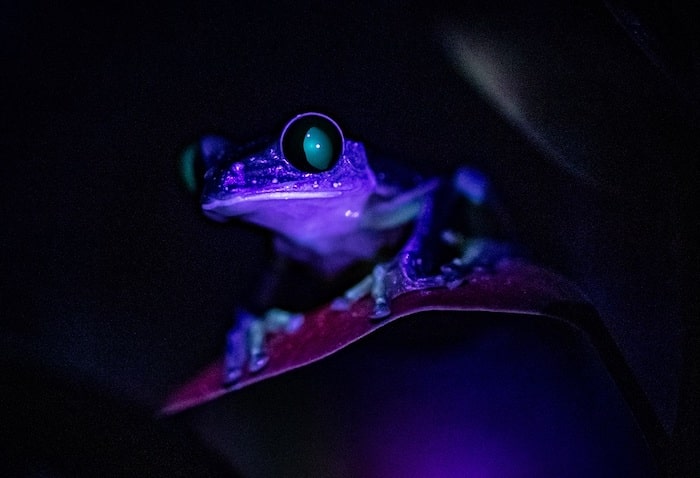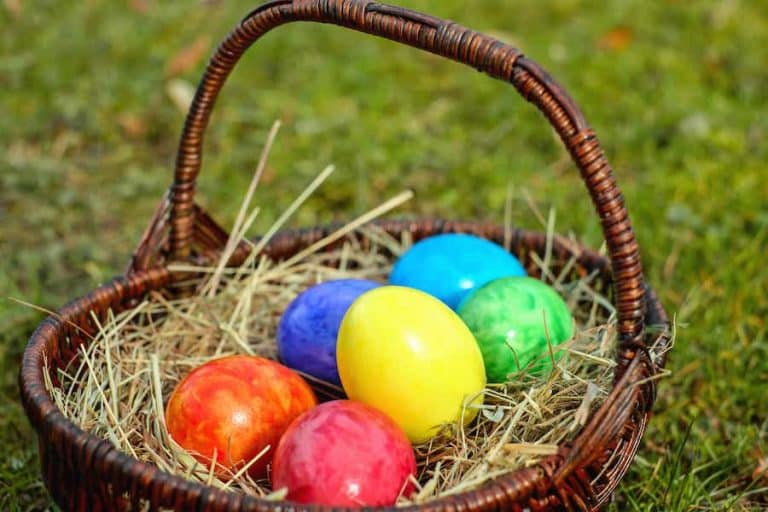Incredible never before seen photos show ‘glow in the dark’ creatures at Chester Zoo
- Written by I Love MCR
- Last updated 4 years ago
- Attractions, Cheshire, Family & Kids

The never-before-seen photos, taken at Chester Zoo at night, show animals sporting vivid red, blue and green shades under ultraviolet light.
Biofluorescence, the technical term for this spectacle, occurs when higher-energy wavelengths of light, like ultraviolet, is absorbed and sent out at a lower energy wavelength, making the area glow.
While this phenomenon is widespread among animals and is caused by several different proteins, pigments and chemical reactions in the skin, little is currently known about why it occurs.

Now, Dr Gerardo Garcia, Curator Lower Vertebrates and Invertebrates at the zoo, has led efforts to conserve some of the world’s rarest reptiles, amphibians, and fishes invertebrates over many decades, has offered several theories on why it may happen.
Why do the animals glow?
“I have worked closely with many these species for more than 30 years, but never before have I seen them in this way,” said Garcia. “Seeing these different animals glow in a spectacular range of colours is incredible, but the question remains – why do they glow?

“Communication is everything in the animal world, and how a species presents itself visually is a big part of how they speak to friends and foes. There are hundreds of frequencies of light, and how animals see light, and therefore colours is different to humans. We actually only see a small portion of the sunlight, so although we may see an animal glowing brilliantly, their own kind, and even other species, may see this completely differently as they read a wavelength that our eyes can’t perceive.”
Dr Garcia says another likely reason for the fluorescent glow is to attract a mate – by helping to catch the attention of potential partners by highlight their unique assets.

“The photos show that only some parts of the animals, such as a claw or an eye, glow – and there may be a good reason for this,” continued Garcia. “For the chameleon, for example, fluorescent patterns potentially give them a secondary signalling system that is different to their well-known colour change communication. Males tend to have more tubercles (scales) on their heads than females, which makes them very attractive to the opposite sex. So, with parts of their head glowing, this emphasises their striking head size to females, drawing them in for a closer look.
“Another theory for an animal’s ability to glow is to mark its territory to others. This is mainly to communicate their social status and ownership, which can help attract a partner and warn off competitors.”

Animals also use colour change to hide from or pose as predators, as Dr Garcia explains:
“Some fish may use their ability to change colour to hide from predators. So, instead of them standing out to potential mates, they could glow to help camouflage. Some even go as far as posing as a particular species’ mate when, in fact, they’re its predator.
“A fourth explanation could be that it’s just not functional at all and is simply a reaction when exposed to UV light. Fluorescence in terrestrial (land-dwelling) vertebrates has been underestimated until now, and its evolutionary role requires more research. Our understanding of the role of fluorescence in animal vision is in its early stages, but it does open an exciting door to understanding the complex world of animal and plant communication.
“Whatever the reason for these magnificent sights, they’re fantastic to document and share with others. We hope these stunning images will further engage people on the importance to protect the unique environment we share with fascinating species of plants and animals.”
- This article was last updated 4 years ago.
- It was first published on 15 September 2021 and is subject to be updated from time to time. Please refresh or return to see the latest version.
Did we miss something? Let us know: press@ilovemanchester.com
Want to be the first to receive all the latest news stories, what’s on and events from the heart of Manchester? Sign up here.
Manchester is a successful city, but many people suffer. I Love Manchester helps raise awareness and funds to help improve the lives and prospects of people across Greater Manchester – and we can’t do it without your help. So please support us with what you can so we can continue to spread the love. Thank you in advance!
An email you’ll love. Subscribe to our newsletter to get the latest news stories delivered direct to your inbox.
Got a story worth sharing?
What’s the story? We are all ears when it comes to positive news and inspiring stories. You can send story ideas to press@ilovemanchester.com
While we can’t guarantee to publish everything, we will always consider any enquiry or idea that promotes:
- Independent new openings
- Human interest
- Not-for-profit organisations
- Community Interest Companies (CiCs) and projects
- Charities and charitable initiatives
- Affordability and offers saving people over 20%
For anything else, don’t hesitate to get in touch with us about advertorials (from £350+VAT) and advertising opportunities: advertise@ilovemanchester.com


Review: Tambo & Bones at HOME is ‘ambitious, bold, gutsy…. and terrific’

Review: JB Shorts 26 at 53two is ‘a five-star showcase of northern talent’


















